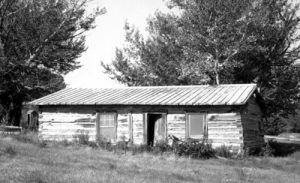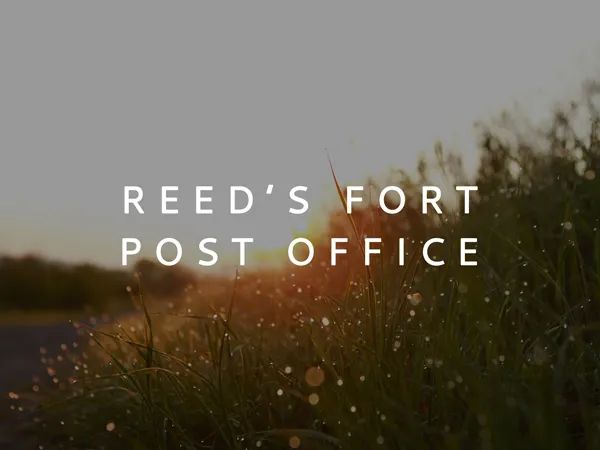
Reeds Fort: Where Montana’s Wild West History Whispers on the Wind
Montana. The very name conjures images of vast, untamed landscapes, snow-capped peaks piercing the Big Sky, and a history as rugged and compelling as its mountains. It’s a land steeped in legend, where the echoes of pioneers, prospectors, Native American tribes, and soldiers still seem to ripple across the prairies. Yet, amidst the grand narratives of Glacier National Park, the Battle of Little Bighorn, and the vibrant gold rush towns, countless smaller, equally vital stories often fade into the landscape, known only to dedicated historians and the whispering winds. One such story belongs to Reeds Fort, a fleeting but pivotal outpost on the Yellowstone River, a testament to the raw ambition and transient nature of the American frontier.
Today, there’s no grand stone edifice, no reconstructed palisade, nor even a weathered wooden sign to mark its exact spot. Reeds Fort exists primarily in historical records, archaeological digs, and the collective memory of those who seek to understand the nuanced tapestry of Montana’s past. Located near the present-day town of Custer, Montana, in the shadow of the iconic Pompeys Pillar, Reeds Fort was a flashpoint of activity in the volatile 1870s, a hub of commerce and conflict that served as a crucial waypoint during a period of immense change and tension. It was a place where fortunes were made and lost, where cultures clashed and converged, and where the very definition of "civilization" was constantly being negotiated on the edge of the wilderness.
The Visionary: John Reed and the Birth of a Fort

The story of Reeds Fort begins, as many frontier tales do, with an enterprising individual. John Reed, a shrewd and ambitious trader, recognized the strategic importance of a particular bend in the Yellowstone River in the early 1870s. The river, a vital artery of the West, flowed through territories still largely dominated by various Native American tribes, primarily the Crow, but also frequented by the Sioux and Cheyenne. It was also the gateway to burgeoning gold fields and a critical supply route for the U.S. Army, which was increasingly asserting its presence in the region.
Reed envisioned a trading post that could capitalize on this confluence of needs. Established around 1875, Reeds Fort wasn’t a military fort in the traditional sense, but a fortified trading post – a collection of log structures, stockades, and corrals designed to offer protection against both the elements and potential hostilities. It quickly became a vital link in the supply chain, a place where steamboats could offload goods destined for military installations like Fort Custer and Fort Keogh, as well as for the scattered mining camps and ranches springing up across the territory.
"John Reed was a quintessential frontier entrepreneur," explains Dr. Evelyn Clarke, a historian specializing in Montana’s frontier period. "He understood the logistics, the dangers, and the opportunities of operating on the very edge of settlement. Reeds Fort wasn’t just a store; it was a mini-community, a haven, and a strategic asset all rolled into one."
A Crossroads of Cultures and Commerce
Life at Reeds Fort was a vibrant, often chaotic, mosaic of humanity. Trappers laden with furs, prospectors fresh from the diggings, soldiers on leave, and Native American traders seeking goods would all converge here. The fort’s ledger likely recorded a fascinating array of transactions: furs exchanged for manufactured goods, whiskey for gold dust, provisions for services. It was a place where the latest news from "the States" arrived via steamboat, and where rumors of new gold strikes or Native American movements spread like wildfire.
The strategic location of Reeds Fort, particularly its proximity to the Tongue River Cantonment (later Fort Keogh) and the Big Horn River (leading to Fort Custer), made it an indispensable logistical hub during the tumultuous Indian Wars of the mid-1870s. Supplies for General George Custer’s ill-fated 7th Cavalry, for example, would have passed through or been staged from such posts. While Reeds Fort itself wasn’t directly involved in major battles, its existence was deeply intertwined with the military campaigns shaping the region.
"You can imagine the scene," offers Dr. Liam O’Connell, lead archaeologist for a recent survey of the Reeds Fort site. "Steamboats belching smoke, unloading barrels of flour, sacks of coffee, crates of rifles. Native American traders on horseback, their goods laid out. Soldiers in their blue uniforms, miners haggling over prices, the air thick with the smell of woodsmoke, horses, and ambition. It was a microcosm of the entire frontier experience."
The fort also sat in a region of immense historical significance. Just a few miles downstream stood Pompeys Pillar, the sandstone monolith bearing the signature of William Clark from the Lewis and Clark Expedition in 1806. This ancient landmark, a beacon for travelers for millennia, would have been a daily sight for those at Reeds Fort, a silent witness to the rapidly unfolding drama of the late 19th century.

The Harsh Realities of the Frontier
Operating a trading post in this environment was fraught with peril. The Montana climate was brutal, with scorching summers and notoriously severe winters that could isolate the fort for months. Disease was a constant threat, and the possibility of conflict with various Native American groups, particularly during periods of heightened tension, always loomed. While trade with the Crow Nation was generally amicable and crucial for the fort’s survival, the broader landscape of the Indian Wars meant that any non-Native presence was viewed with suspicion by other tribes.
Lawlessness was another persistent challenge. The vast, sparsely populated territories of Montana were a magnet for outlaws, desperadoes, and opportunists. Vigilante justice was often the only law that held sway. Traders like John Reed had to be resilient, resourceful, and capable of defending their enterprise. Whiskey, a popular commodity, often fueled disputes and violence, adding to the volatile atmosphere.
"Frontier life was not for the faint of heart," Dr. Clarke emphasizes. "These posts were often the only beacon of ‘civilization’ for hundreds of miles. They were places of refuge, but also places where the raw edges of humanity were constantly exposed. Every nail hammered, every log cut, every trade made, was an act of sheer will against the overwhelming wilderness."
The Inevitable Decline
Despite its strategic importance and bustling activity, Reeds Fort’s existence was, like many frontier outposts, ephemeral. The very forces that brought it into being ultimately led to its demise. The late 1870s and early 1880s saw a rapid expansion of railroads across Montana. The Northern Pacific Railway, pushing westward, began to supplant the rivers as the primary mode of transportation for goods and people. Towns sprang up along the rail lines, drawing commerce and population away from older riverine settlements.
As the military frontier shifted and consolidated, the need for isolated supply posts diminished. Forts Custer and Keogh, once reliant on steamboat deliveries, eventually gained their own direct rail connections or more accessible supply routes. John Reed himself, ever the pragmatist, likely shifted his focus to new opportunities arising along the railway corridors or in more established communities.
By the early 1880s, Reeds Fort had largely been abandoned. Its log structures, no longer maintained, quickly succumbed to the elements. Wood was a valuable commodity, and it’s likely that settlers or passing travelers scavenged the timbers for their own cabins or campfires. The Yellowstone River, ever-changing, also played a role, potentially eroding parts of the site over time. Within a few short years, the bustling fort had vanished, leaving little more than faint depressions in the earth and scattered artifacts to mark its passing.
Rediscovering the Whispers: Archaeology and Legacy
For decades, Reeds Fort remained largely a ghost, a name in old maps and military records. However, modern archaeology and historical preservation efforts have begun to peel back the layers of time. Researchers, using historical accounts, maps, and remote sensing technology, have pinpointed the likely location of the fort. Subsequent archaeological surveys have yielded fascinating insights.
"We don’t have monumental ruins, but what we do find tells a compelling story," Dr. O’Connell explains, gesturing towards a hypothetical dig site. "Shards of ceramic, square-cut nails, fragments of glass bottles – including the distinctive ‘pinched-waist’ variety used for patent medicines – spent cartridges, buttons, and pieces of tools. Each artifact is a tiny puzzle piece, helping us reconstruct daily life, the types of goods traded, and the challenges faced by those who lived there."
These finds paint a vivid picture of a diverse community, of trade with both Native Americans and Euro-American settlers, and of the harsh realities of frontier existence. They affirm Reeds Fort’s role as a vital cog in the complex machinery of westward expansion, a place where the forces of commerce, military might, and indigenous resistance converged.
Reeds Fort, though physically gone, remains a powerful symbol. It represents the countless small, temporary settlements that dotted the American West, each playing its part in the grand narrative of expansion. It reminds us that history is not just about famous battles and iconic figures, but also about the everyday lives of ordinary people striving to build a future in an unforgiving landscape.
As the wind sweeps across the Yellowstone River, rustling through the cottonwoods and sagebrush, one can almost hear the echoes of steamboat whistles, the chatter of traders, and the distant hoofbeats of horses. Reeds Fort, Montana, is more than just a forgotten name; it is a whisper from the past, an enduring testament to the resilience, ambition, and fleeting nature of a truly wild frontier. Its story continues to remind us that even the most transient of outposts can leave an indelible mark on the vast, storied canvas of the Big Sky Country.


